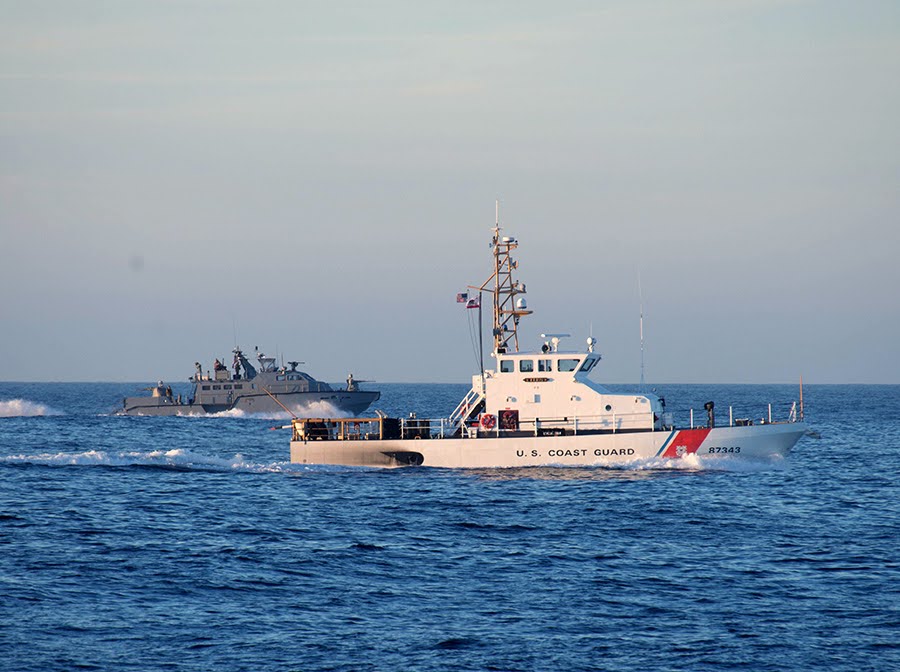3 ways the US Coast Guard can leverage mesh networks for off-grid connectivity

In the realm of maritime safety and security, effective communication is paramount. For the United States Coast Guard (USCG), ensuring seamless connectivity is not just a priority but a necessity. Communication is needed when operating off-shore in bordering countries, during ship inspections, and when collaborating with other agencies during a disaster response.
Here are three ways the U.S. Coast Guard can enhance its communications and situational awareness across various missions, from counter-drug operations to safeguarding ports of entry and creating a bubble of connectivity during disaster recovery.
Resilient connectivity in austere off-shore environments
Beyond rescue missions, the USCG plays a crucial role in counter-drug operations and combating transnational criminal activities at sea. Mesh networking radio devices can provide cost-effective and resilient communication channels ship-to-ship or ship-to-shore. Because of their low-visibility nature, mobile mesh networking offers a distinct advantage in sensitive operations where discretion is paramount.
By leveraging mesh networking’s operational security features, the USCG can conduct sensitive operations with enhanced confidentiality and stealth, minimizing the risk of detection and interference. Coast Guard units can also use mesh networking devices to effectively distinguish between friendly forces and threats. Whether tracking suspicious vessels or ensuring the safety of personnel during high-risk operations, mesh networking emerges as a force multiplier in the fight against illicit maritime activities.
Enhancing port security
Ports of entry serve as critical gateways for maritime commerce, making them susceptible to security threats. Here, mesh networking offers an added layer of protection. By seamlessly integrating mesh network devices into port infrastructure or handing these devices out to inspectors, the Coast Guard can bolster security measures, ensuring swift communication and coordination during boarding operations. From monitoring large shipping vessels to safeguarding against potential threats, mesh networks prove indispensable in maintaining port security and protecting national interests.

Rescues made efficient with backup communications and interoperability
Coast Guard operations are sometimes confined to ports of entry. They often extend over vast regions and involve communication and coordination with local public safety and law enforcement organizations.
Using an aerial relay such as an airplane, helicopter, or weather balloon, goTenna can create a bubble of connectivity for operators in maritime environments. This aerial device is crucial for long-distance communication for the Coast Guard, border patrol, and naval missions.
One of the most significant advantages of mobile mesh networking is its resilience in adverse conditions. Whether it’s a natural disaster or deliberate disruption, mesh networks serve as a reliable communication backbone. Mesh networks can operate autonomously, serving as the primary form of communication until traditional channels are restored. This redundancy proves invaluable, ensuring continuous connectivity and information flow, even in adversity.
With devices like goTenna, Coast Guard personnel can establish ad hoc mesh networks, enabling real-time communication and coordination. Whether relaying information about distressed individuals or coordinating rescue efforts, mesh networks offer a reliable lifeline, especially in remote or off-shore locations where traditional communication infrastructure may be lacking.
Real-life case study: Putting mesh networking to the test in a maritime environment
goTenna’s record of maritime testing speaks to the transformative potential of mobile mesh networking for the USCG. Through maritime relay tests and aerial demonstrations, goTenna showcased the effectiveness of mesh networks in extending communication range and enhancing operational coverage along the eastern coastline.
- Ship-to-shore vessel inspection: goTenna devices tracked end users simulating an inspection over the TAK app. goTenna’s TAK plugin allowed communications to continue in areas where cellular access and voice transmission were blocked by surrounding containers and the vessel’s structure. The team could transmit data through three levels of the ship’s steel structure. This field test demonstrated that goTenna is a viable situational awareness and communications platform for officers who board container vessels to conduct operations.
- Ship-to-shore and air-to-ground: goTenna was evaluated in another test as a viable situational awareness and communications platform for government employees who board or conduct inspections on large cargo vessels. Using less than ten devices, goTenna conducted an aerial test that leveraged a new goTenna relay attachment prototype built by Bunker Supply Co. goTenna achieved connectivity between a mobile mesh networking relay attached to the 11th floor of a building onshore and a goTenna user over 17 miles away on a ship in the Atlantic Ocean.
The results from these technology demonstrations showcase goTenna’s ability to transmit real-time updates for critical decision-making.
Mobile mesh networking is essential for enabling U.S. Coast Guard operations, offering unprecedented communication, coordination, and situational awareness capabilities. By embracing this innovative technology, maritime operators can safeguard their agents and ensure safety and security at sea.








No Comment